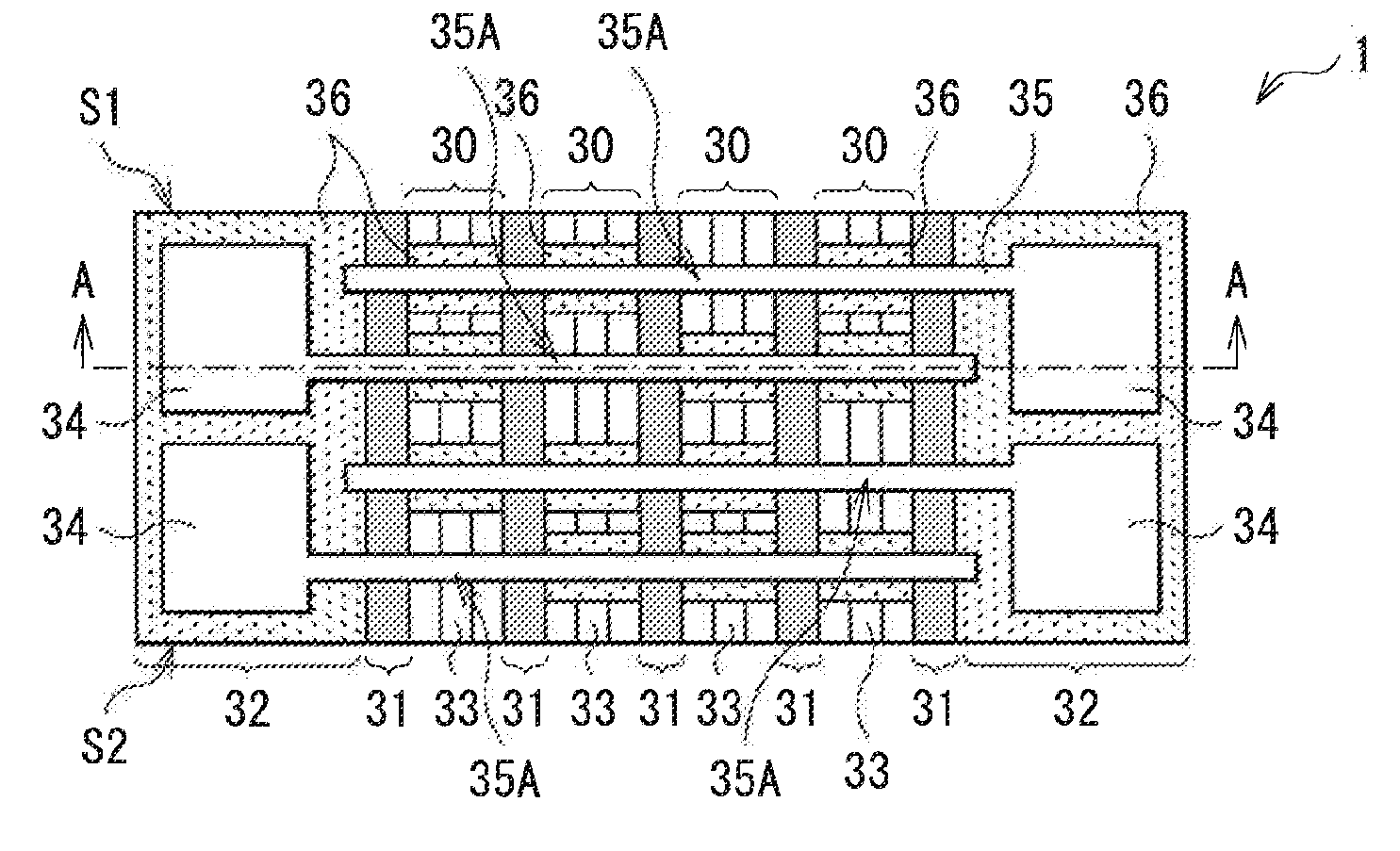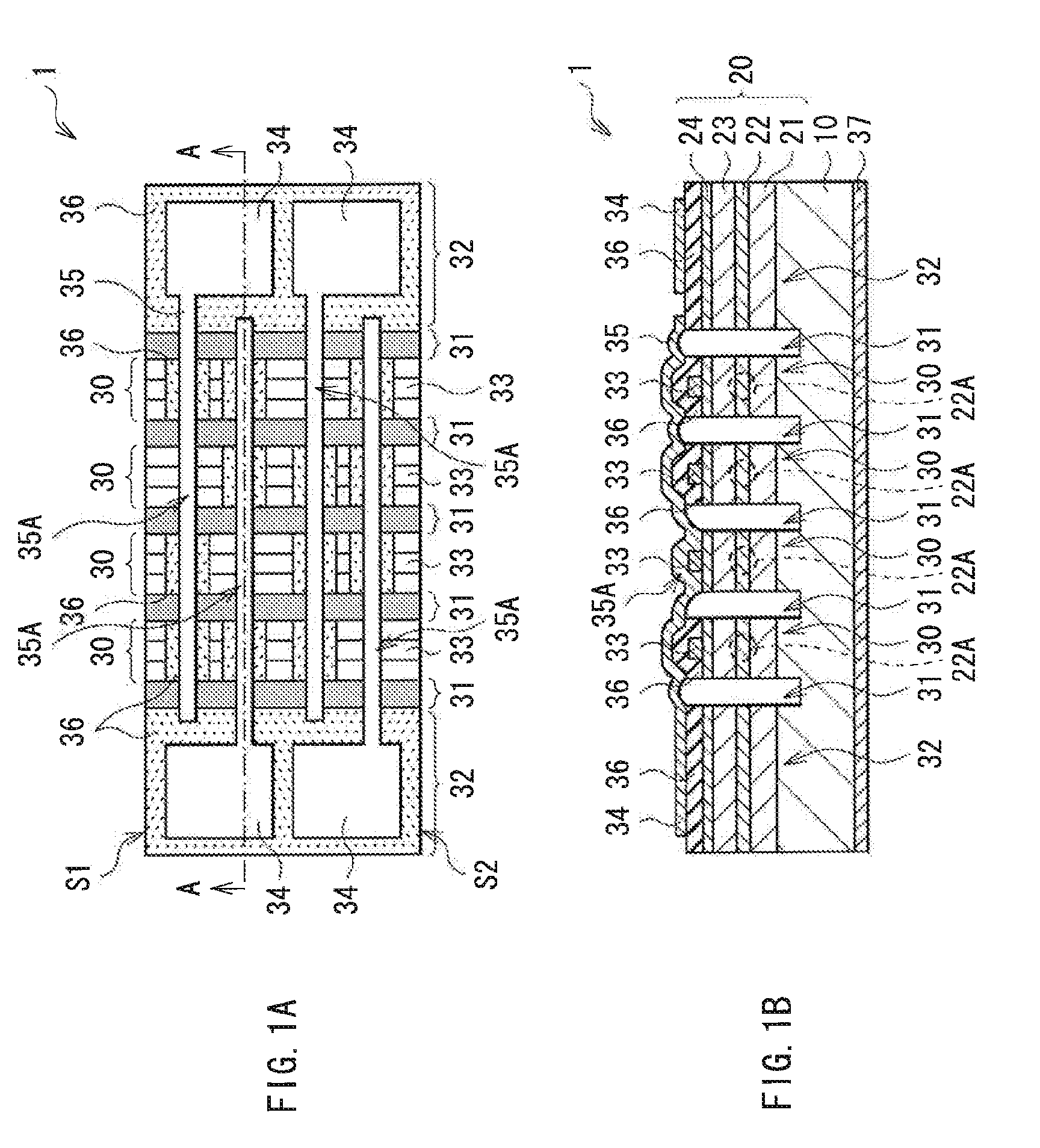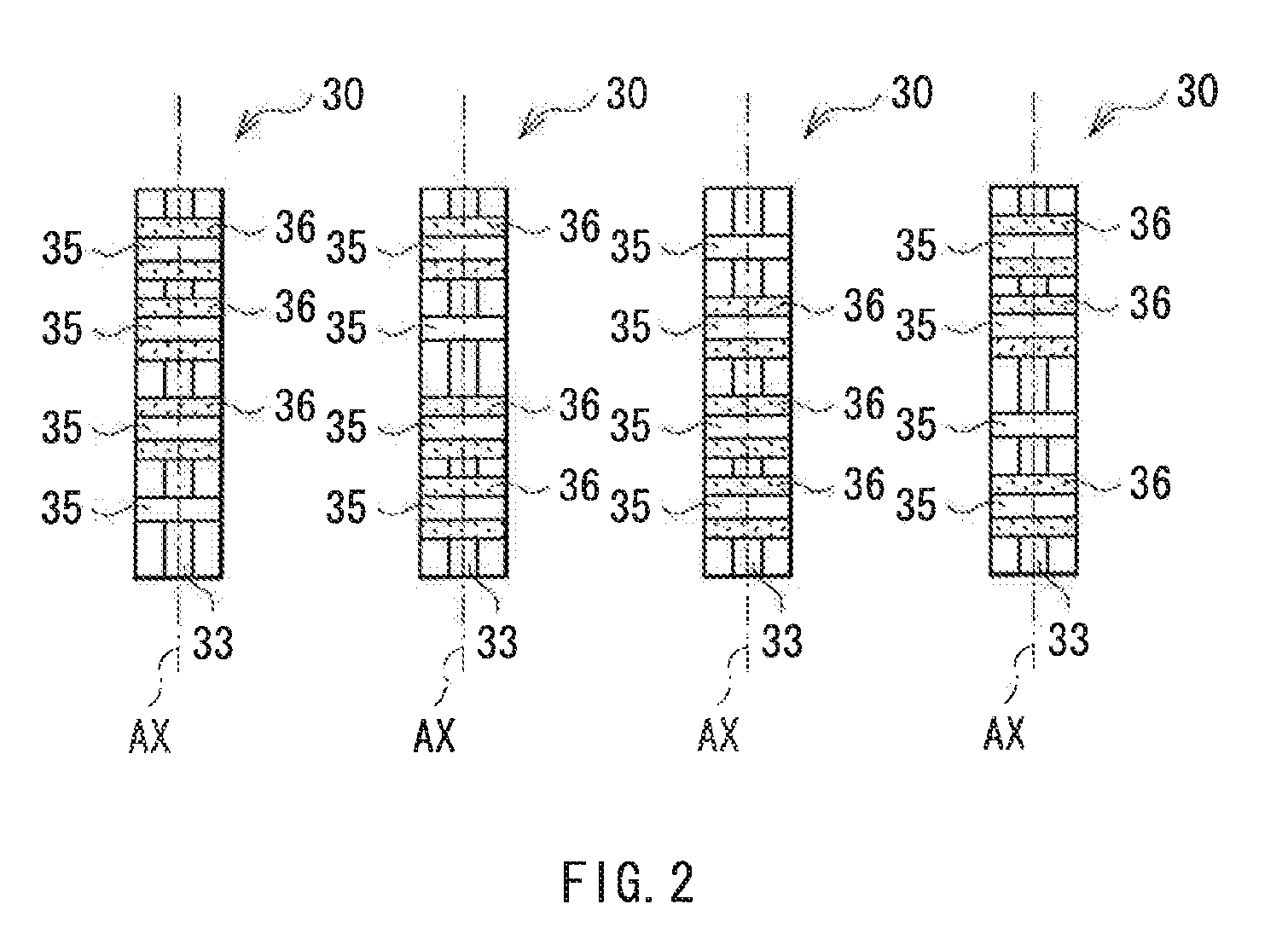Laser diode
a laser diode and laser technology, applied in the field of laser diodes, can solve the problems of different polarization directions of light emitted from the central laser structure out of many arranged laser structures, and the polarization direction of light emitted from the single laser structure is different from the desired direction, so as to increase the symmetry of the wiring layer and reduce the change of polarization direction
- Summary
- Abstract
- Description
- Claims
- Application Information
AI Technical Summary
Benefits of technology
Problems solved by technology
Method used
Image
Examples
embodiment
[0027]FIG. 1A illustrates an example of a top view structure of a laser diode 1 according to an embodiment of the invention. FIG. 1B illustrates an example of a cross sectional structure taken along line A-A of the laser diode 1 of FIG. 1A. The laser diode 1 of this embodiment is a multibeam laser diode including a plurality of striped emitters, and is an edge emitting laser diode in which laser beam is emitted from each end face of each emitter.
[0028]The laser diode 1 includes, for example, as illustrated in FIG. 1B, a semiconductor layer 20 including a lower cladding layer 21, an active layer 22, an upper cladding layer 23, and a contact layer 24 in this order from a substrate 10 side over the substrate 10. Thought not illustrated, the semiconductor layer 20 may be further provided with a layer other than the foregoing layers (for example, a buffer layer, a guide layer and the like). In the semiconductor layer 20, a plurality of strip-shaped ridges 30 (laser structure) are formed....
modified examples
[0057]In the foregoing embodiment, the description has been given of the case that the wiring layer 35 extends from one base 32 to another base 32. However, for example, the wiring layer 35 may have the end in the vicinity of the connection section 35A. In this case, for example, as illustrated in FIGS. 6A, 6B, 7A, and 7B, the end of the wiring layer 35 may be provided in the end of the top face of the ridge 30 or in the vicinity thereof. Further, for example, though not illustrated, it is possible that the wiring layer 35 hurdles the upper electrode 33 contacted with the wiring layer 35, and the end of the wiring layer 35 is provided in the vicinity of a side face of the upper electrode 33. Further, in the case where the end of the wiring layer 35 is provided in the end of the top face of the ridge 30 or in the vicinity thereof, or is provided in the vicinity of a side face of the upper electrode 33, for example, as illustrated in FIGS. 6A and 6B, a dummy wiring layer 35B not funct...
PUM
 Login to View More
Login to View More Abstract
Description
Claims
Application Information
 Login to View More
Login to View More - R&D
- Intellectual Property
- Life Sciences
- Materials
- Tech Scout
- Unparalleled Data Quality
- Higher Quality Content
- 60% Fewer Hallucinations
Browse by: Latest US Patents, China's latest patents, Technical Efficacy Thesaurus, Application Domain, Technology Topic, Popular Technical Reports.
© 2025 PatSnap. All rights reserved.Legal|Privacy policy|Modern Slavery Act Transparency Statement|Sitemap|About US| Contact US: help@patsnap.com



